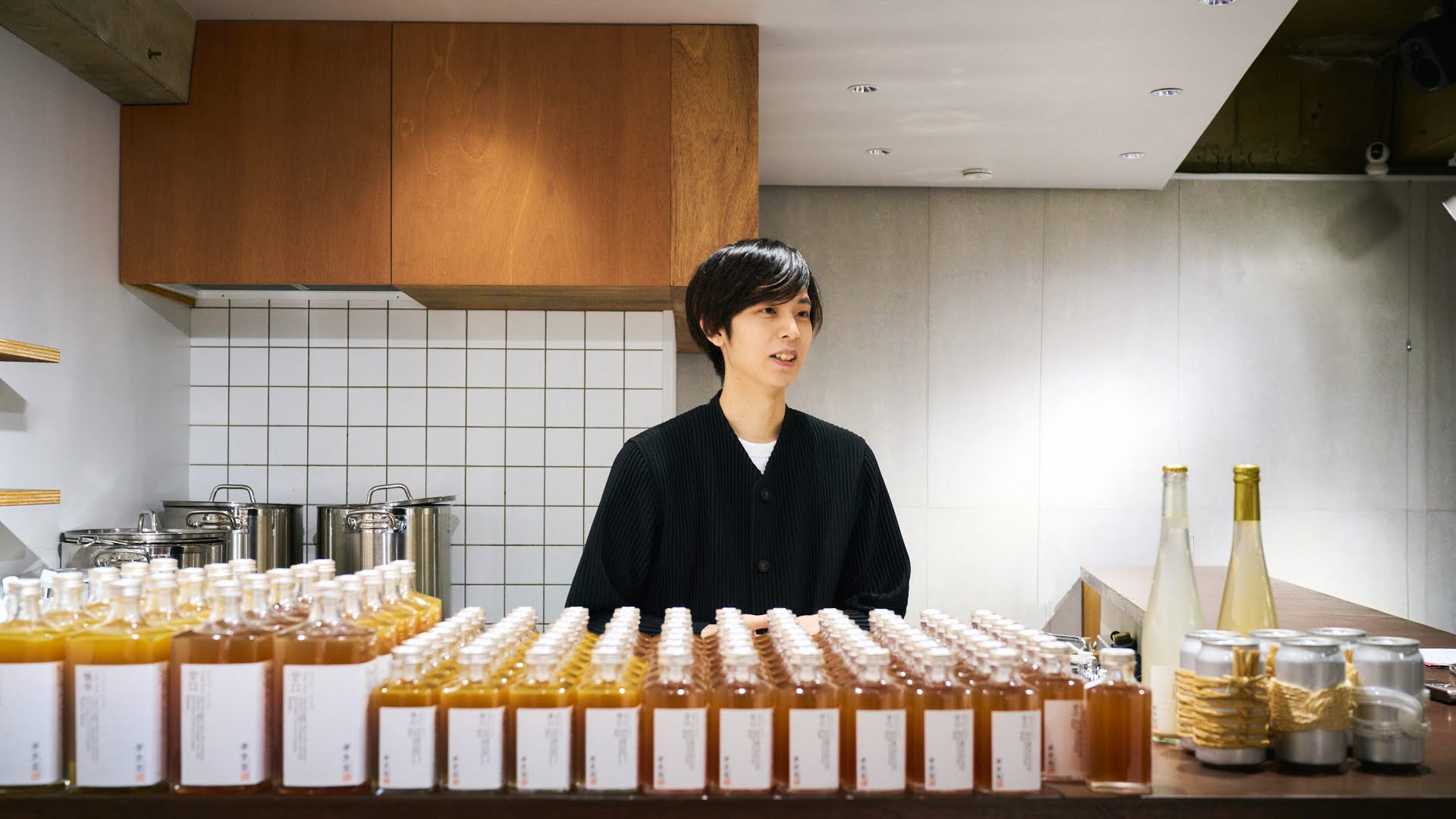In Chiyoda-ku, Tokyo, there is a slightly unusual ginger ale specialty shop.
KOHODO is only open during the day on Saturdays and Sundays. Customers must take off their shoes to enter the shop as they step onto an earthen floor. At that bar-like counter, they can enjoy a glass of ginger ale.
The owner of the shop is Masao Kigaki. He has roots in Taiwan and says that ginger has always been a part of his daily life.
Ginger is said to improve metabolism and the immune system, prevent obesity and have an anti-aging effect. Raw ginger has a component called gingerol and heated ginger develops a component called shogaol. Effects of ginger on the body, like antibacterial effects and body warming effects, depend on how the ginger is processed such as whether it is heated or dried.
We will introduce the ginger ale produced by Kigaki, who is enchanted by ginger, and his products which have become world-class drinks.
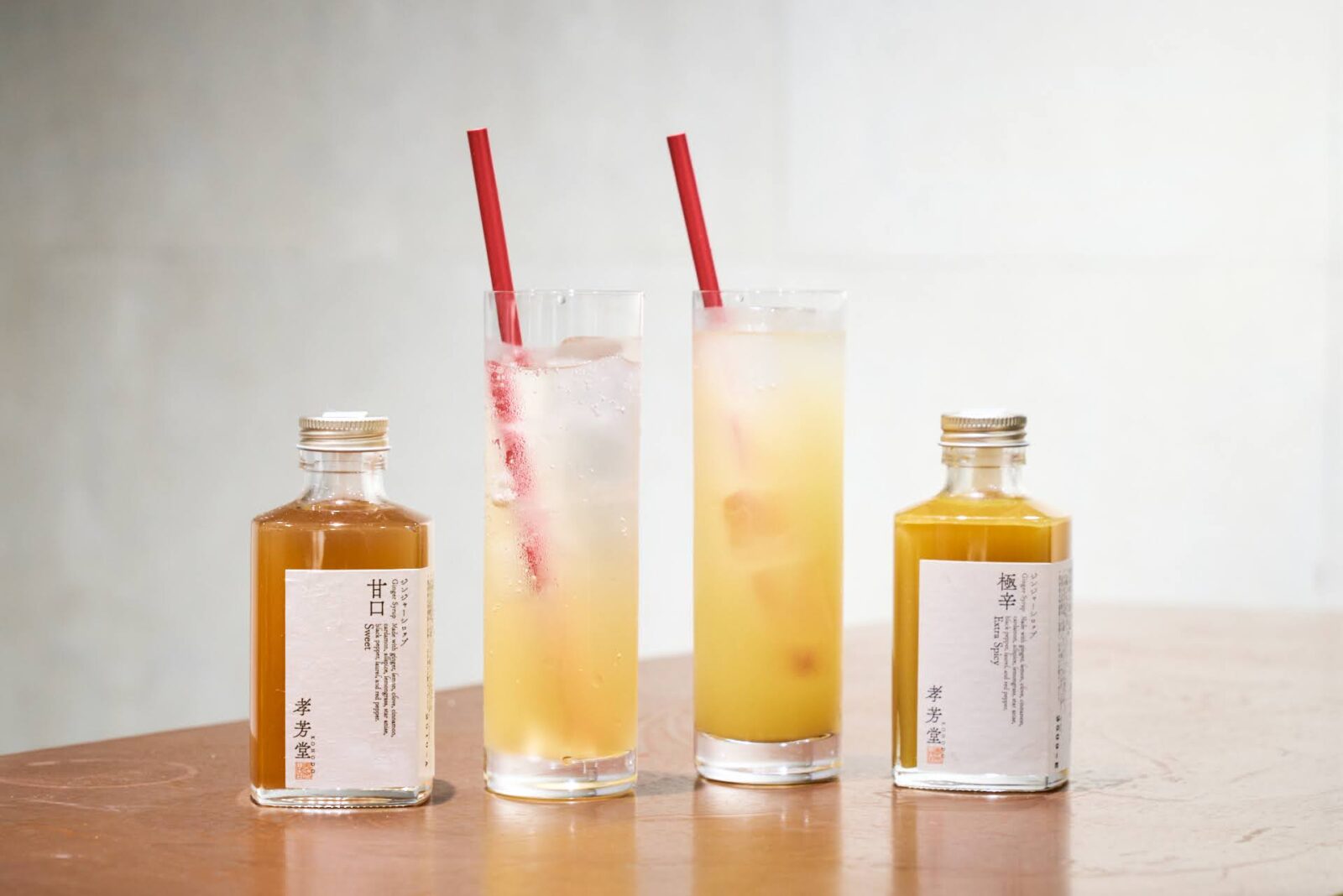
The shock in learning that commercial ginger ale doesn’t contain ginger
Kudan in Chiyoda-ku is known for being home to the Yasukuni Shrine, the Imperial Palace and the Nippon Budokan.
Masao Kigaki is the owner of KOHODO, a ginger ale specialty shop located there.
“The reason I became interested in ginger ale originates from the shock I had of drinking ginger ale for the first time as a student and realizing that it does not taste like ginger.”
Kigaki says this shock has a lot to do with his upbringing.
“My mother is from Taiwan, so ever since I was a child I ate dishes with lots of ginger and spices. Whether it was a stir-fry, soup or hot pot, I always thought it was the norm to have a lot of ginger in food.”
“Because of that, even when I was living alone and cooking for myself as a university student, I always made dishes with a lot of ginger, such as Haslet Soup, which is made from organs and ginger, and Maoyu Chicken, which is a chicken and ginger soup.”
“I would often cook for my friends and one time they pointed out that I really use a lot of ginger. That was the first time I realized using ginger was not the norm for everyone. I love ginger and it made me realize how enchanted I was by it.”
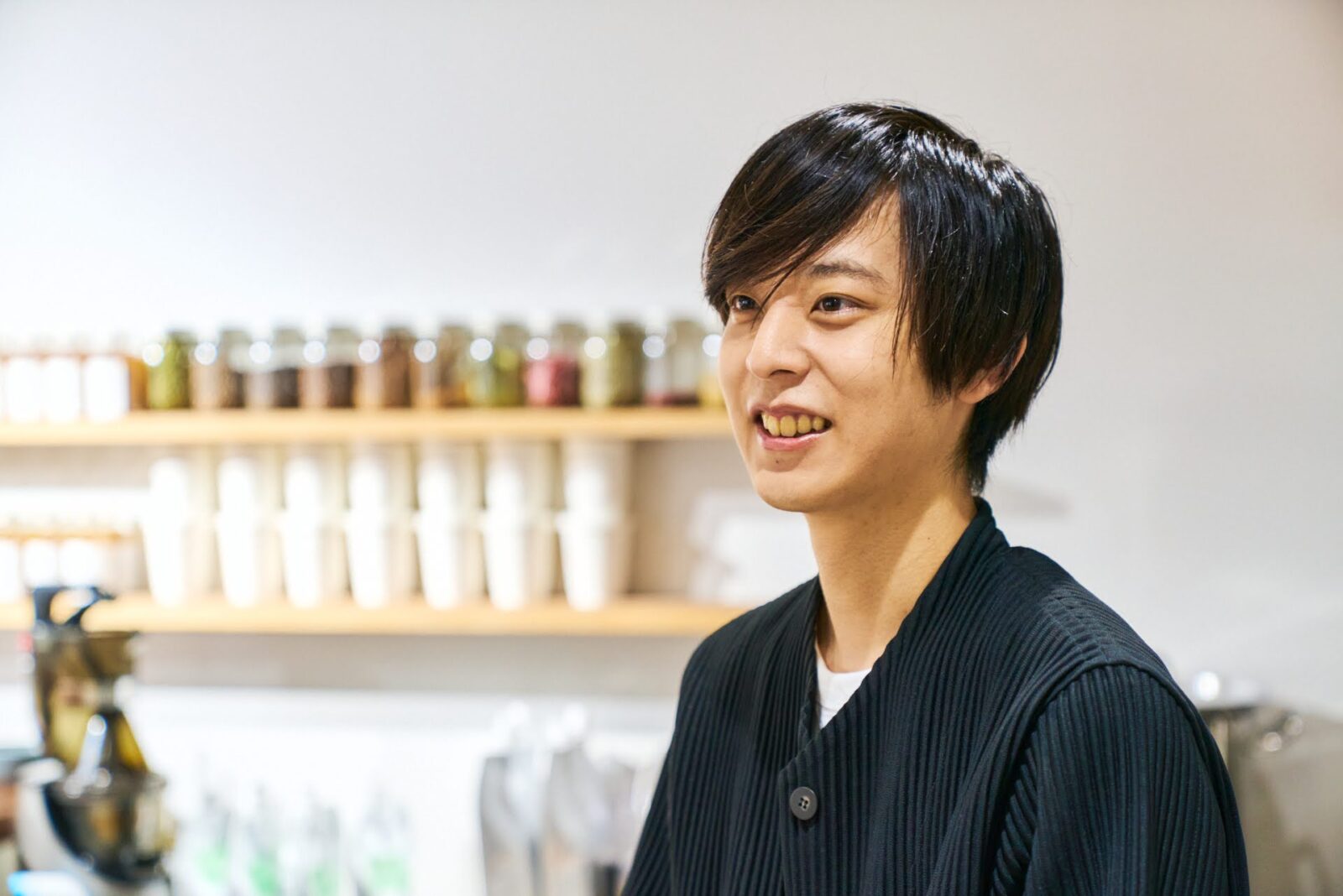
It is not surprising that Kigaki was shocked to find that commonly sold commercial ginger ale did not actually have ginger in it.
“Actually, ginger ale is not a very popular drink in Chinese-speaking countries. I often hear that Chinese students try ginger ale for the first time while they are studying abroad in Japan. For me, I think my first time trying ginger ale was also in university.”
“When I tried commercial ginger ale for the first time I was so surprised that it did not taste like ginger. I looked at the ingredients and found that there was no ginger in it at all. It only had artificial flavoring and not real ginger.”
“Then I learned that I can make ginger ale with ginger and other spices that I use often at home.”
Growing up with a Taiwanese background, ginger, cinnamon, cloves and star anise were all familiar foods in his everyday life.
Kigaki graduated from university in 2018 and began working full-time, but also started making ginger ale on the side.
Tasting ginger from all around Japan to make the ultimate ginger ale
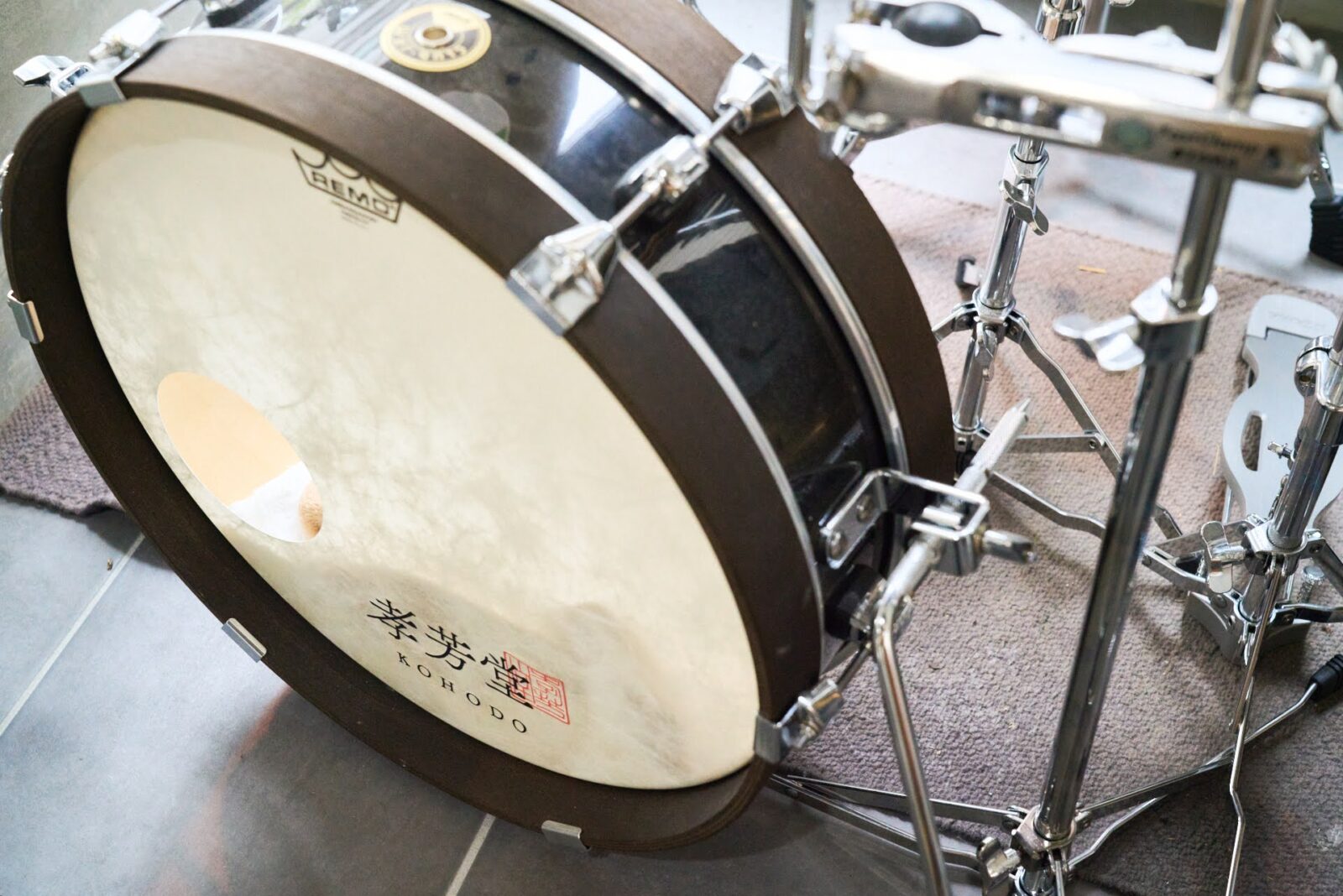
In his first attempt to make ginger ale he started by making a syrup out of boiling sliced ginger, sugar, water and some spices. He was enthralled by how delicious it was and was hooked.
In order to make the ultimate ginger ale, he took on “a mountain of challenges one by one”, including experimenting with different ways to process the ginger, selecting the ginger by production region, and testing different combinations of spices.
“The components of ginger and how it tastes depends on how it is processed. For example, whether it is sliced or grated or how long it is heated will change how spicy it is.”
“When you heat ginger, the component called gingerol changes into shogaol. Shogaol is a more spicy or hot component so it took me a lot of experimentation to find the best processing method for ginger.”
He also found that the taste and components of ginger vastly differ depending on its region of production. He ordered famous ginger from Chiba and Kumamoto Prefecture, and also from overseas countries such as China.
After testing about 20 varieties of ginger he came across a ginger called Kogane (meaning: golden), which is produced in Tosa of Kochi Prefecture.
“Its luscious fragrance, golden color and flavor were completely different from any other ginger. I put aside the issue of production volume and the stability of supply and decided to use this ginger to make the ultimate ginger ale because it had the best flavor and aroma.”
“The Kogane ginger also has more gingerol and shogaol components than regular ginger so it is characterized as being more spicy and hot.”
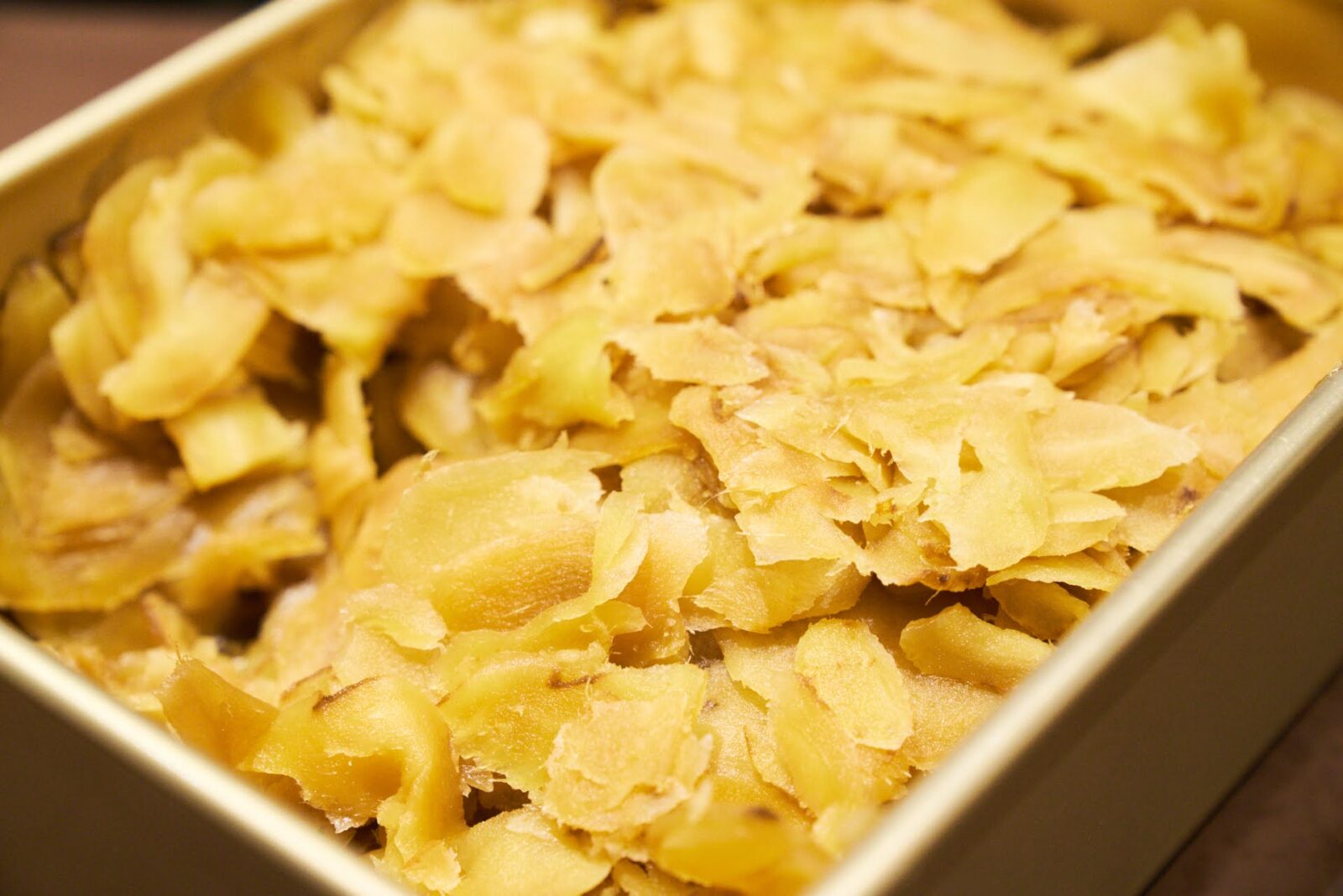
There is also no “correct” type or amount of spices to use when it comes to making ginger ale. Careful to maintain the refreshing flavor of ginger, Kigaki tested countless combinations to create and perfect his original recipe.
In 2021 he launched his first product, “Sweet Ginger Ale”.
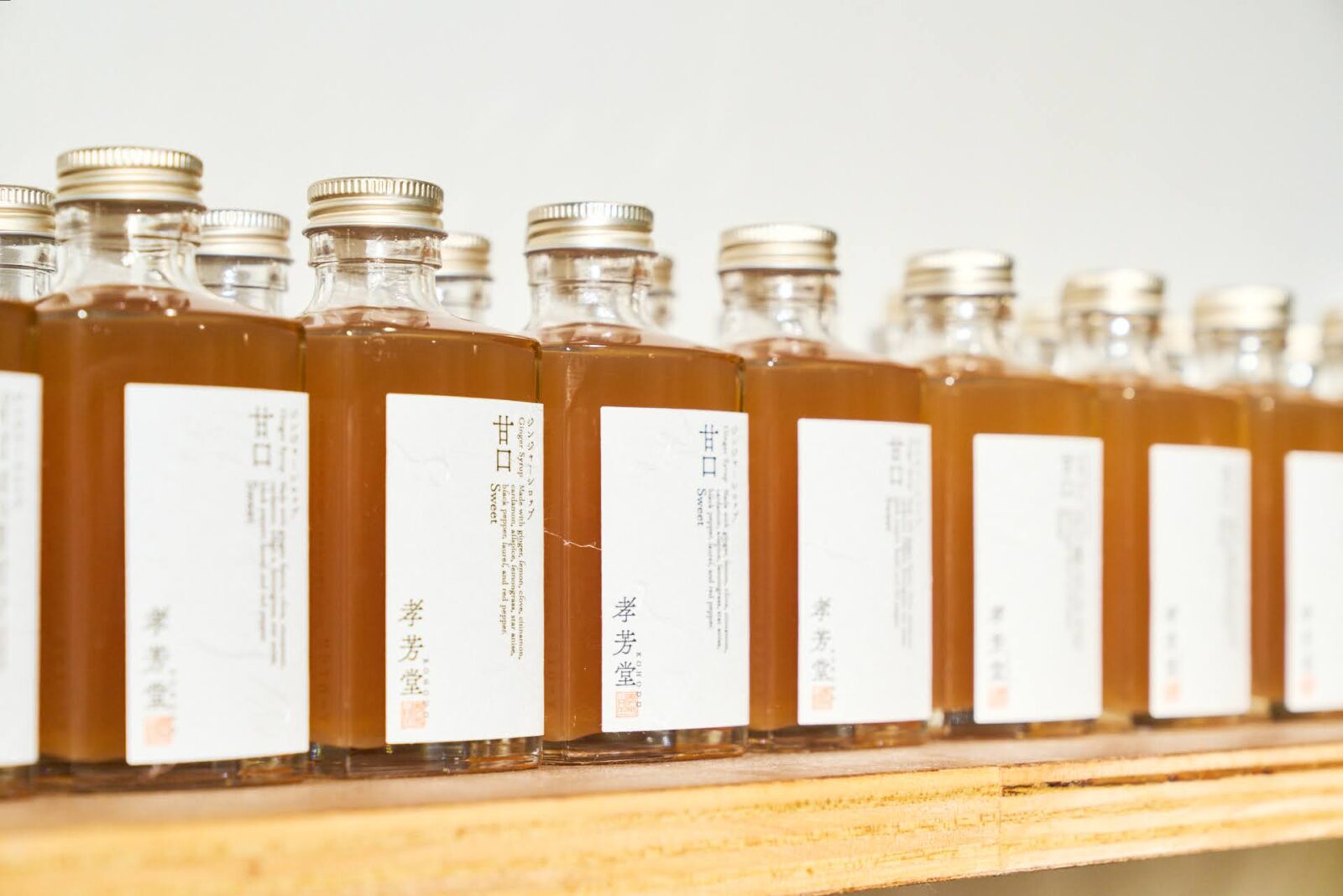
Incorporating spices in everyday life in place of coffee
During the three years Kigaki spent perfecting his original ginger ale recipe he had changed jobs and returned to Tokyo. When he was invited by a friend from university to start a business together, he decided to open the ginger ale specialty shop KOHODO.
The coronavirus pandemic was starting to spread in 2021, so they chose the concept of KOHODO to be to “incorporate spices in simple everyday life.”
“Ginger is also considered to be a spice so we wanted to produce the ultimate ginger ale that can be incorporated in everyday life.”
“I think coffee is an example of a shikohin that is a part of everyday life for many people, but there are some people who do not enjoy it, or they cannot have it because they are pregnant or do not want to consume caffeine before bed. For various reasons I think people are becoming more careful about coffee consumption.”
“Of course there are caffeine-free options in coffee, however I thought it would be good to have other options and incorporating spices in everyday life can be one of them. Ginger ale can be one way to enjoy spices everyday.”
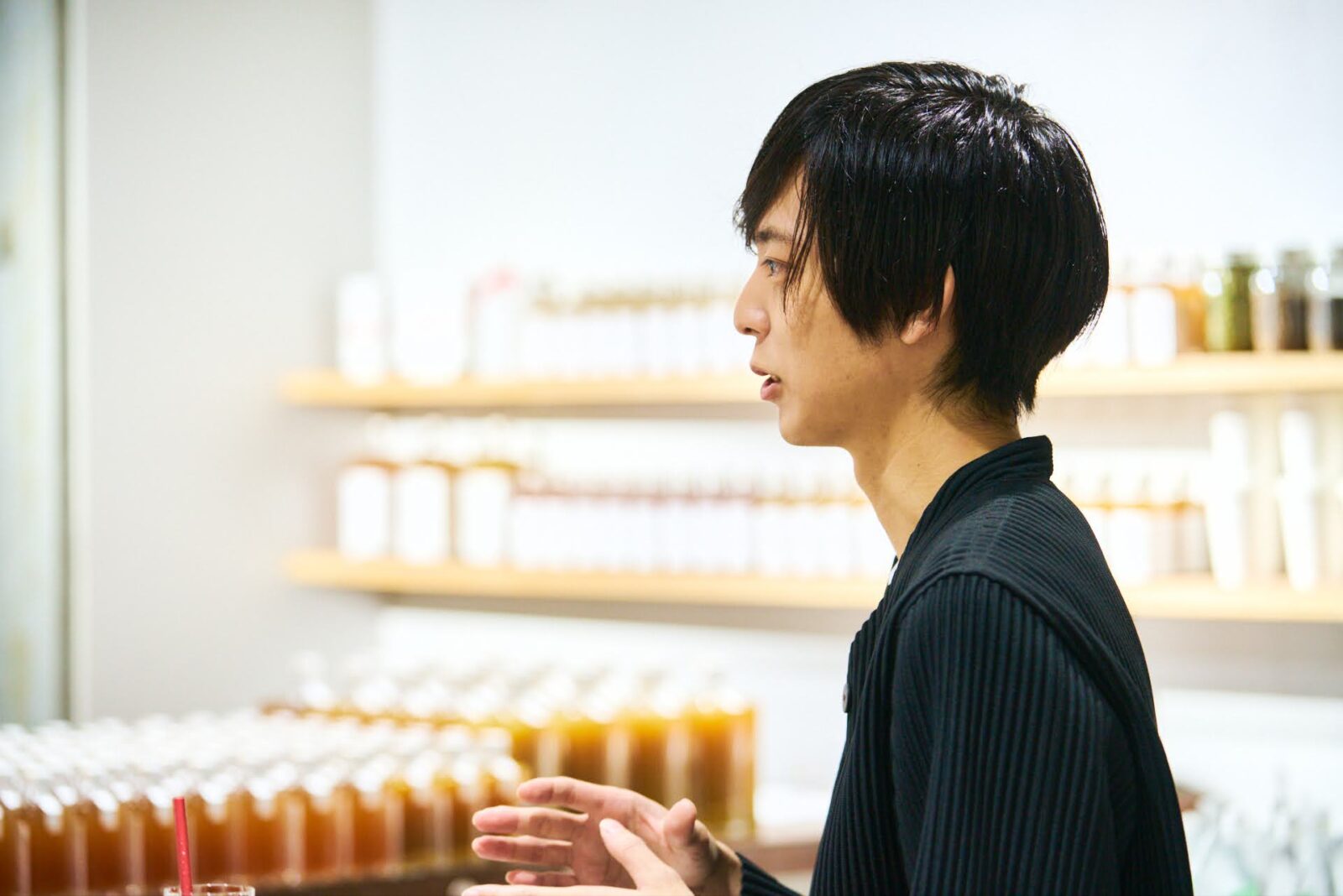
Using 9 varieties of spices, Kogane ginger and Setona lemons
Most craft ginger ales available today use about two to three varieties of spices. It is rare to find a ginger ale like KOHODO’s that uses nine varieties of spices. Kigaki says he has many regular customers who become captivated by the complex flavor of his ginger ale.
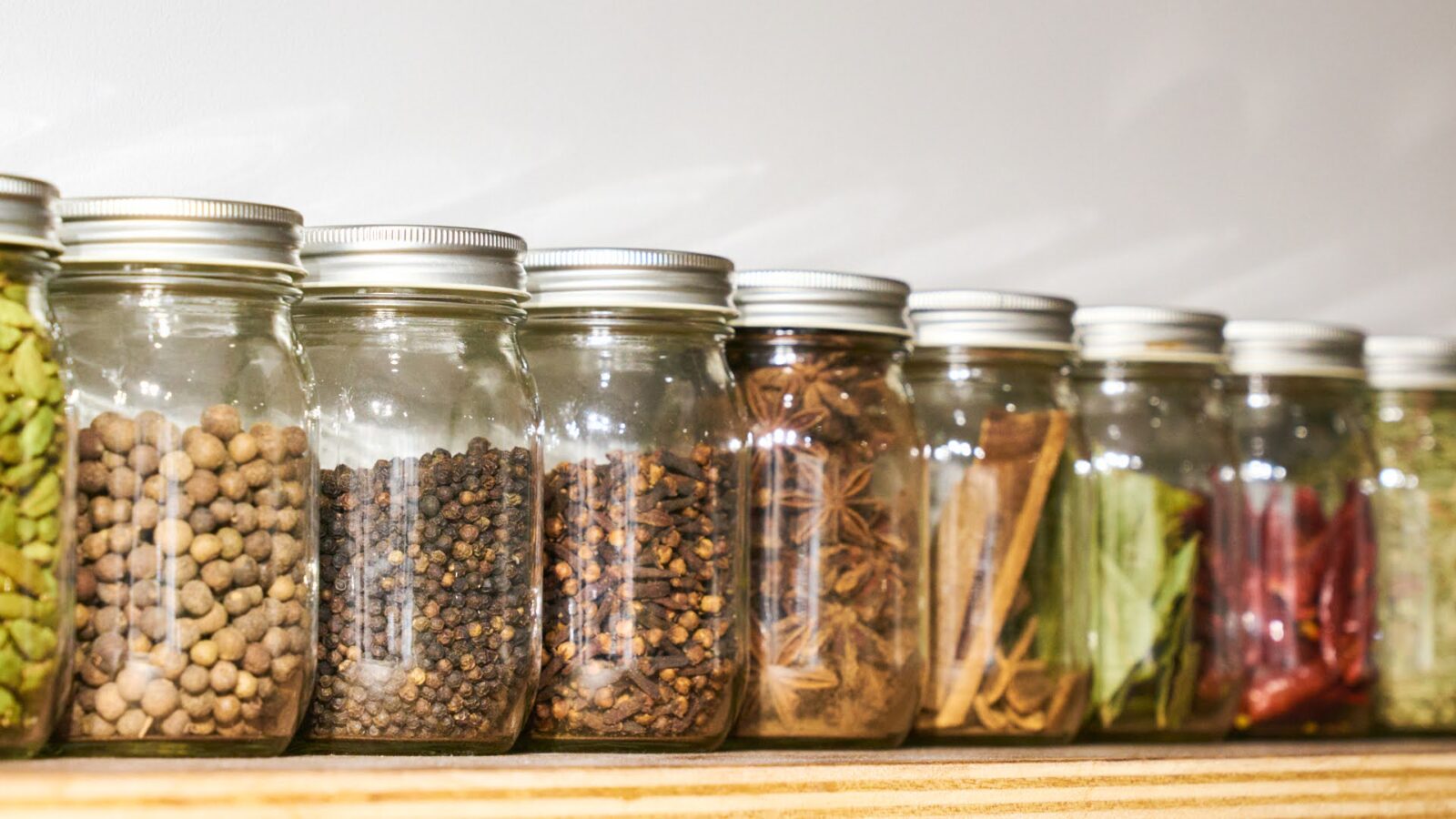
With the banner of “the ultimate ginger ale” in tow, Kigaki opened pop-up shops in Nihonbashi in November 2021 and in Shimokitazawa in December 2021. Both were very well received by customers.
By then they had started looking for a property where they could open a permanent stop and they opened their current shop in Kudan in June 2022.
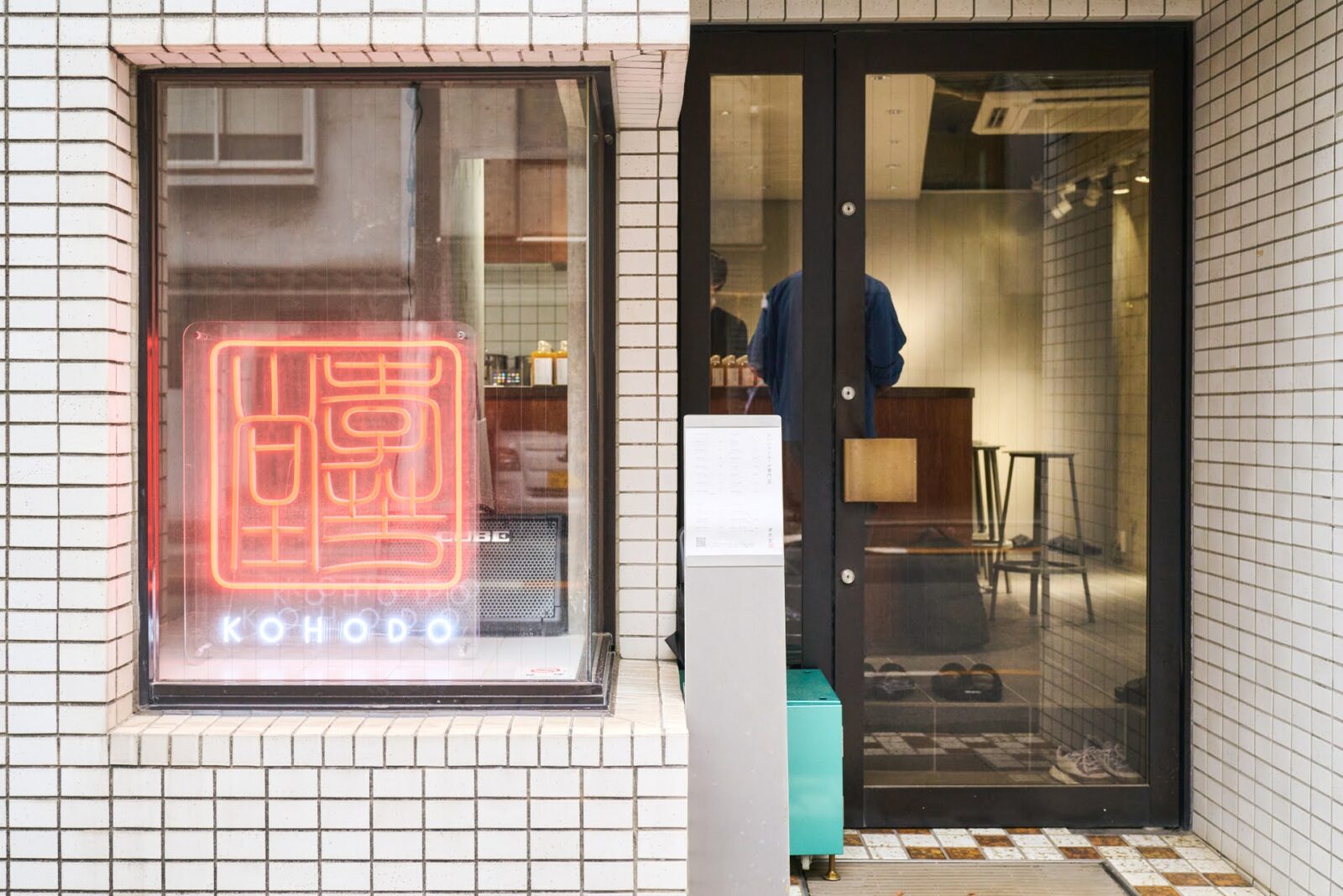
The shop has an earthen floor at its entrance which adds to the very Japanese atmosphere of the space.
Kigaki wanted to create an exotic space that fuses both Western and Eastern influences. Another reason he chose Kudan is because it is the home to the Indian and British embassies. The shop design also reflects this fusion.
“Ginger originates in Asia and ginger ale is said to have been originally derived from British ginger beer (a drink that is made by fermenting boiled ginger juice). I wanted to create a culturally exotic brand by taking a drink that originated in the West and making it with the best Japanese ingredients.”
“Japan is very rich in water resources and is well known around the world to have top quality vegetables and fruits. I believe that making ginger ale, which is a popular drink in the West, with Japanese ingredients allows us to create a product that can compete globally.”
“In order to emphasize our exotic image of a brand that fuses East and West, I asked for the store design to reflect these two seemingly contradictory elements. We placed a Western-style bar counter in a space with a traditional earthen floor of a Japanese house. The circular bar counter is also placed in the center of a tiled floor shaped in a square. The counter has a copper base top, but the sides are made of wood.”
Kigaki’s vision is to deliver a delicious Japan-made ginger ale from Kudan to the world. Although he is soft spoken, his words have a strong conviction to them.
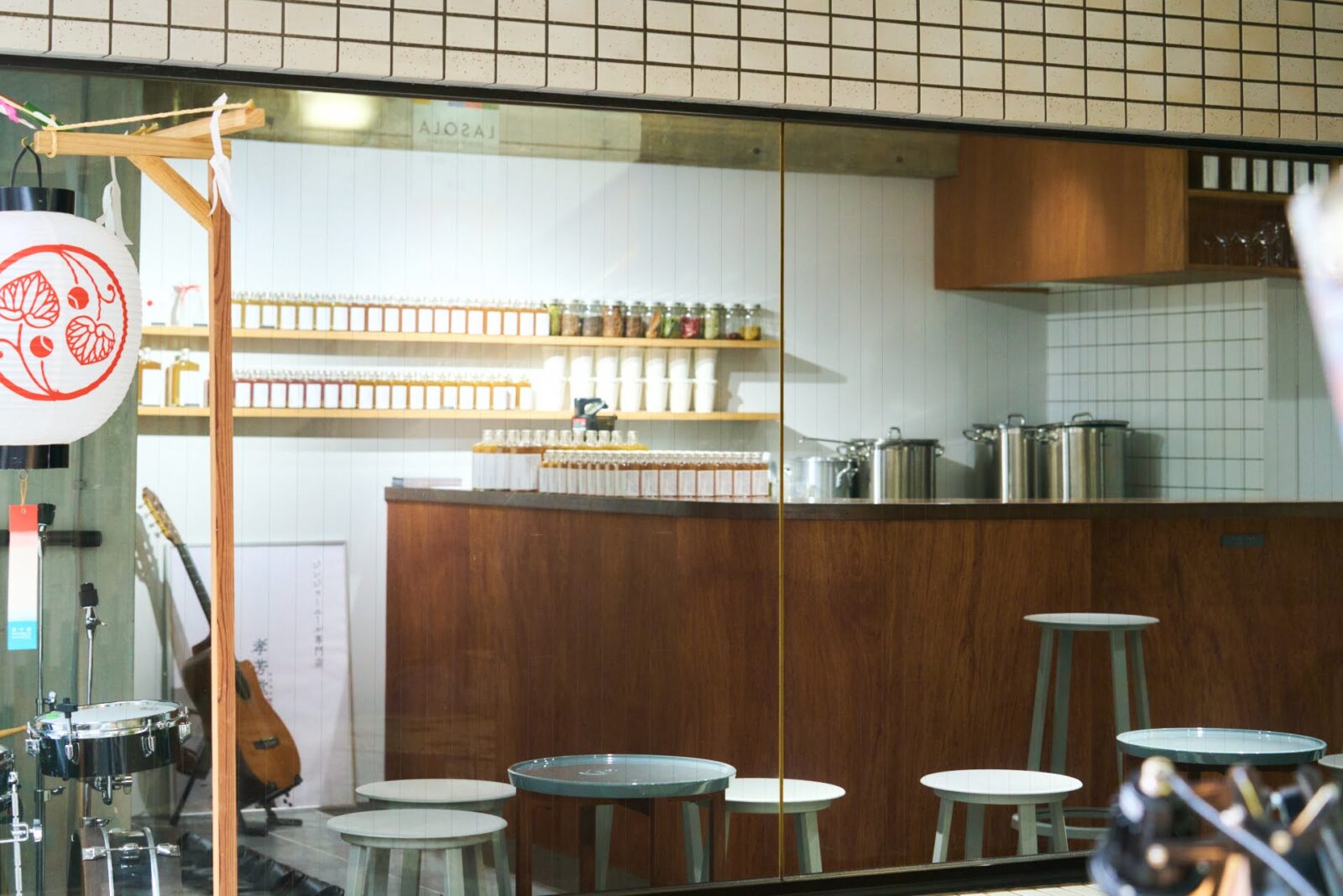
Taste comes first, then health effects
After launching his first Sweet Ginger Ale product, Kigaki developed the Dry Ginger Ale and Extra Dry Ginger Ale products.
“After launching the Sweet Ginger Ale, we got a lot of feedback asking for a more dry and spicy version. Ginger is mostly water so we used an extraction method based on the principle of osmosis to extract the water directly out of ginger to make the syrup.”
“Gingerol and shogaol are what give ginger its heat, but it is not as hot as capsaicin (found in chili peppers, etc.). Because of this, it is not easy to bring out heat in ginger products, but we tried adding a lot of finely chopped and grinded ginger and succeeded in bringing out a heat that is characteristic to raw ginger.”
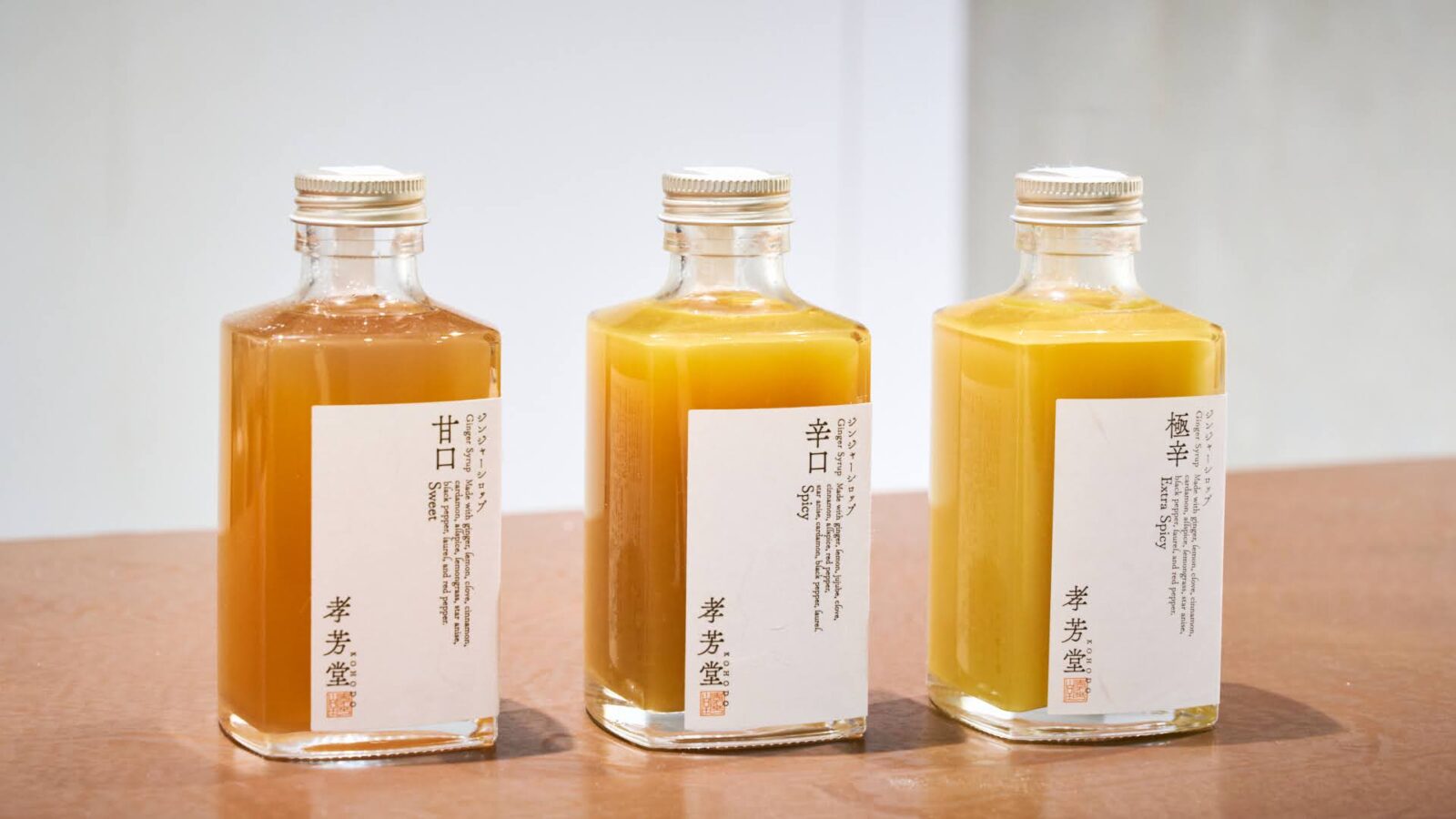
The Extra Dry Ginger Ale has a distinctively dark color. It also has the most recognizably ginger flavor and is the most popular syrup sold among their B2B clients.
After releasing the Sweet Ginger Ale, Dry Ginger Ale and Extra Dry Ginger Ale products, Kigaki shifted his focus on the effects that ginger has on the body and developed Ginger Ale 2.0 in a pursuit for ultimate flavor and health effects.
Kigaki developed this product with an emphasis on the can, saying, “There is no question that canned beverages are growing in popularity around the world.”
“Ever since I was a child my grandmother and mother would give me foods with a lot of ginger in it because they said it was good for my health, so I had a subconscious understanding of the health effects of ginger. However, since I focused on taste for my previous products, I intentionally did not focus on health effects until now.”
“As I developed this new product I began to focus on gingerol and shogaol not only for its flavor, but for their effects on health.”
“I explained the differences it makes on heat earlier, but in terms of health effects, gingerol is said to cool the depths of our bodies. In other words, it releases heat from the inner body and brings it to the outer surface. It is said to alleviate serious sensitivity to cold, but people are also surprised to learn that it cools the inner body.”
“Shogaol, on the other hand, increases when ginger is heated and it is said to heat the inner parts of the body. Consuming ginger allows us to warm our bodies both inside and out.”
Offering a luxurious experience in a sober curious age
In another pursuit of flavor and health effects, Kigaki is releasing a new product this summer. It is a bottled high-end ginger ale called ROKO.
Kigaki feels that KOHODO’s customer base are women who seek the health benefits of ginger and men who seek ginger ale for its flavor as a shikohin experience. There are also a growing number of customers that represent the sober curious trend (people who are not interested in drinking alcohol).
Think of the non-alcoholic drink options at weddings or events, or even high end restaurants.
Although there is usually a wide range of alcoholic drinks available, the non-alcoholic options are usually limited to oolong tea and orange juice. There is a big gap in the difference of options for alcohol and non-alcohol drinkers.
Shouldn’t there be a luxurious ginger ale option that is available at such events and high end restaurants?
That was the idea behind the creation of ROKO.
“The common ginger ale that most people are familiar with today contains only ginger extract, but it was developed to act like a champagne without alcohol.”
“We developed ROKO using a luxurious amount of real ginger as a carbonated drink that can be enjoyed in luxurious settings. I think it will expand the options for non-alcoholic drinkers.”
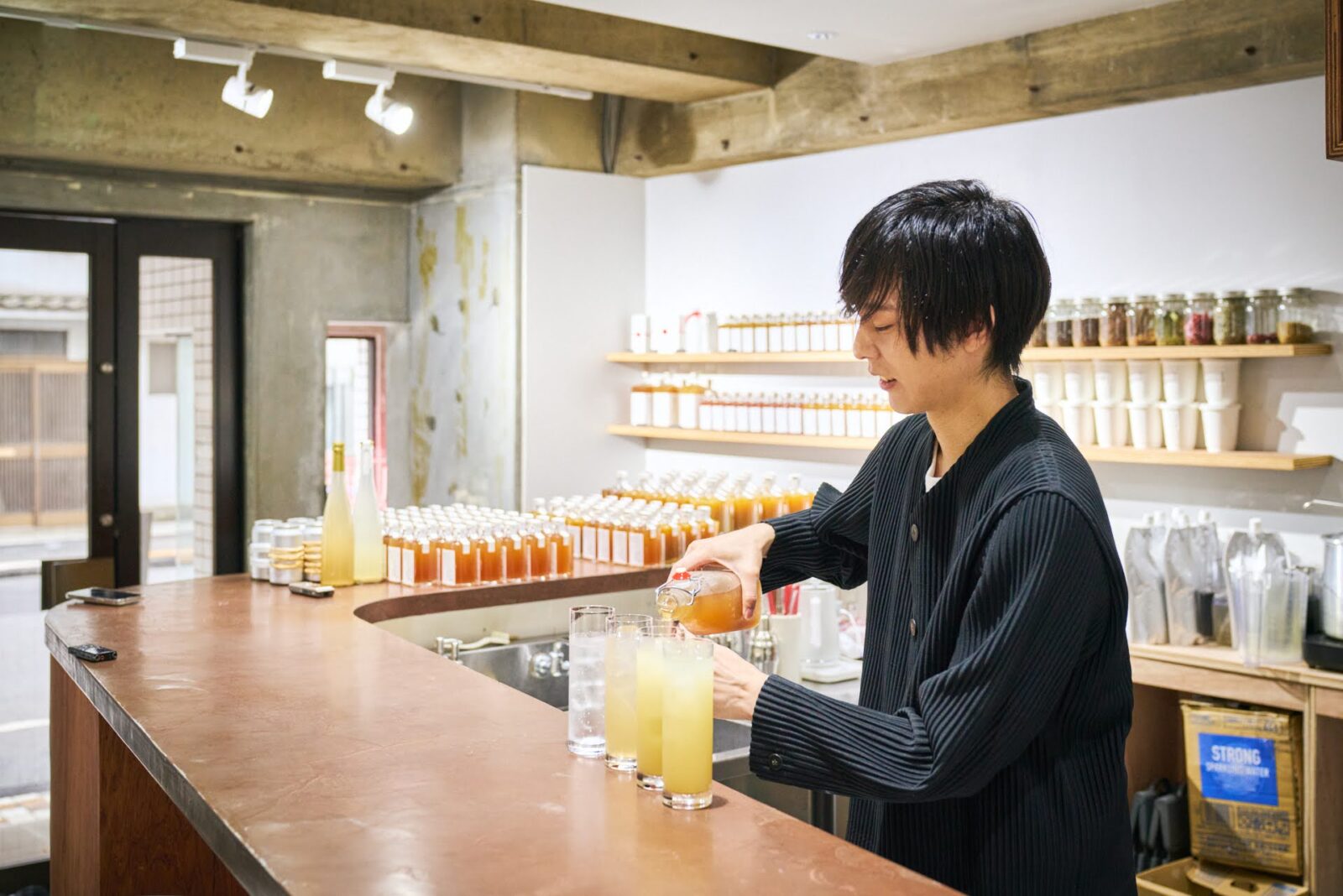
ROKO is made with a combination of castor sugar, wasabon (fine-grained Japanese sugar) and allulose (a rare sugar) to create a drink that is not too sweet but has a refreshing finish. It can be enjoyed as a paired drink with food as well.
“Japanese people are very familiar with the rich and full bodied flavor of castor sugar. The rare allulose sugar creates the refreshing finish and the wasabon creates depth. We also use castor sugar that is made from sugar beets and made without bone char so it is vegan friendly.”
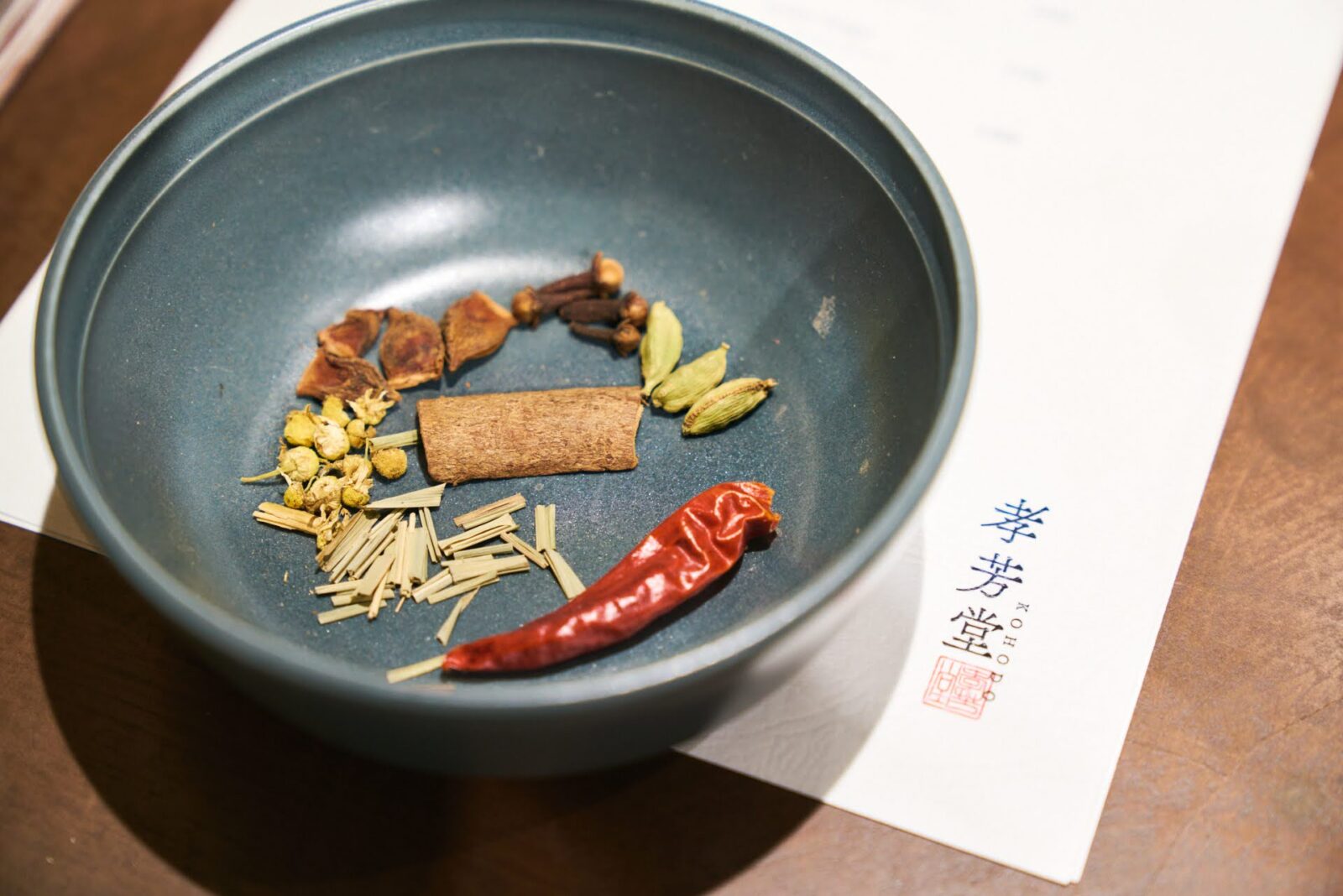
The basis of minimalism and keeping things simple
From product development to the design of his shop, Kigaki shared his many dedications to his vision. Regardless, the ingredients and package design of KOHODO’s products remain very simple.
“We want to keep things simple and deliver our products in a way that is subtle but will reach people who really understand our vision.”
“For example, we do not use any food additives in our syrups but we did not think it was necessary to add the words “additive-free” in our brand marketing strategy.”
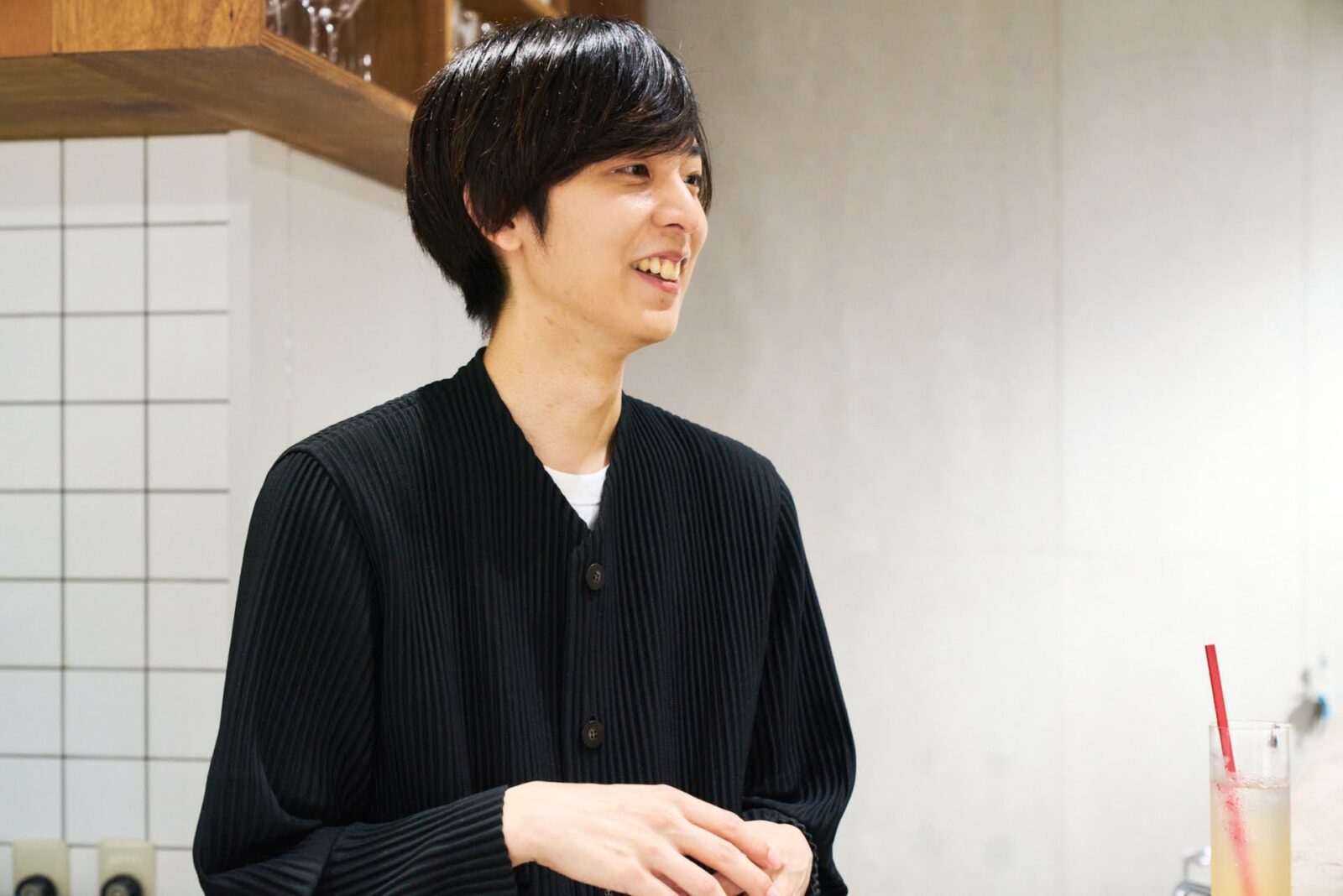
“When I think about why I think this way, I think it comes from the influence of calligraphy, which I have practiced for a long time. It is not quite minimalism, but I was trained in calligraphy to express beauty in black and white and through the spaces that are left blank.”
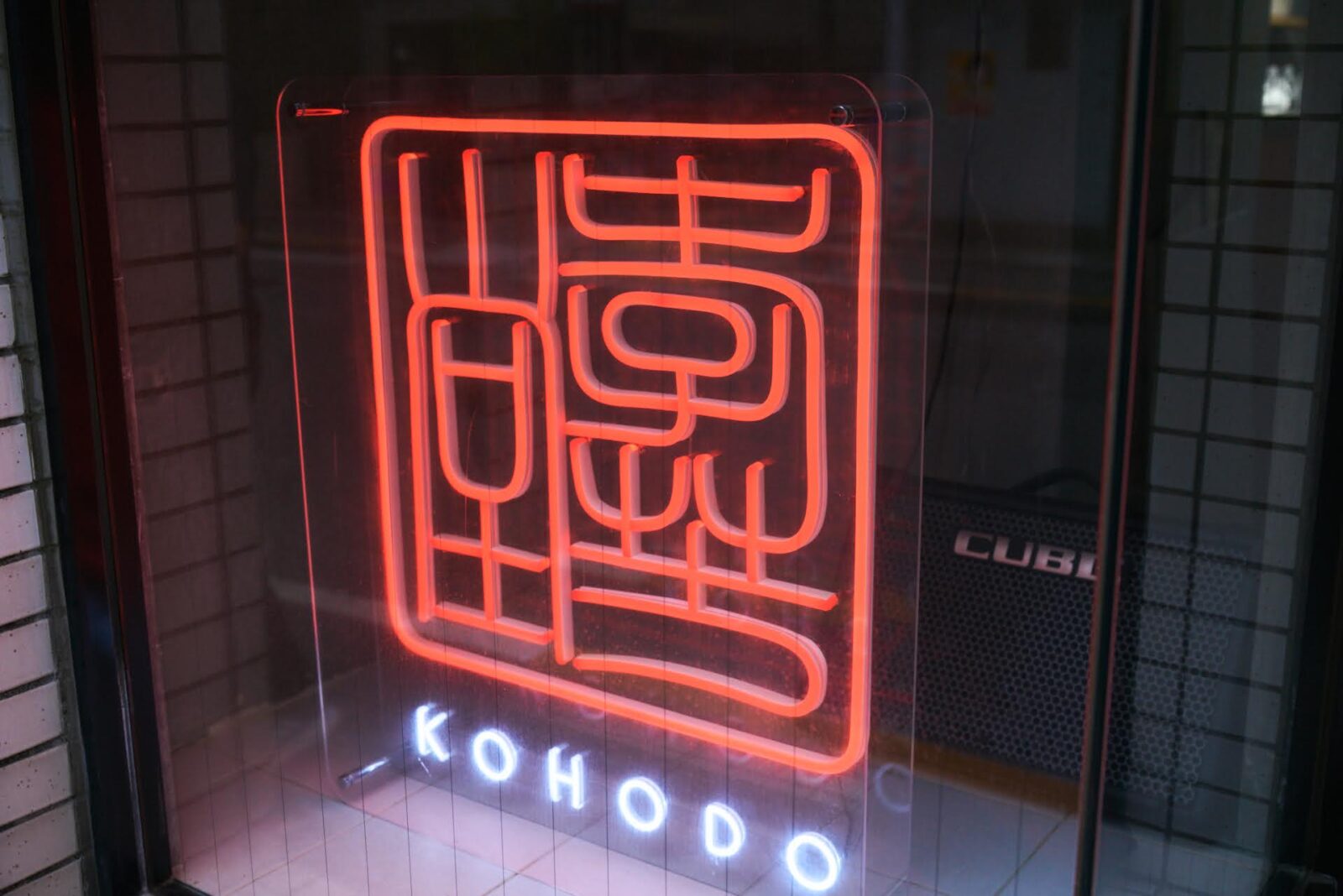
The KOHODO brand name is also a reflection of Kigaki’s approach to ginger ale production that is not influenced by modern trends and marketing methods.
If you look at the Chinese characters used in the brand name KOHODO (孝芳堂), it includes the character 孝, which means filial piety and is based on the image of a child supporting an elderly person.
“I have been brought up by my mother and grandmother who taught me that ginger is good for my health. I chose the name KOHODO in the hope of providing all generations, young and old, regardless of gender, the option of enjoying a healthy and dignified drink.”
The deep flavor of KOHODO’s products are directly correlated to the diligent efforts put into its creation.
Kigaki’s wish is to deliver ginger ale that will let us incorporate spices into our everyday life. We can’t help but look forward to what more Kigaki has planned for the future as he promotes Japanese-made ginger ale to the world.
Translation: Sophia Swanson
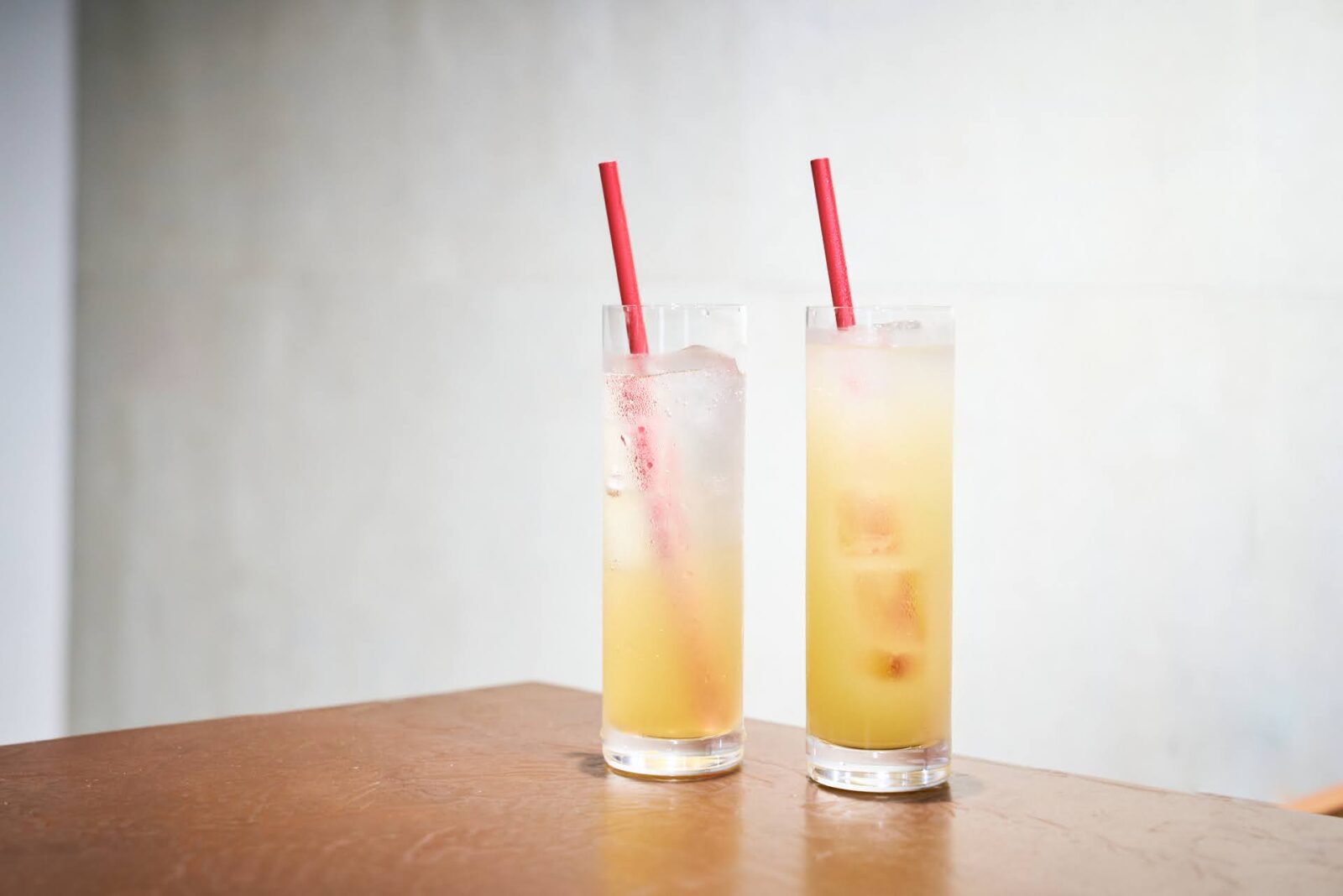
After taking a food sensory test during university and discovering a keen sensitivity to “umami”, she traveled for food in and out of Japan for 25 years. While working at a publishing company, she was in charge of the gourmet food section of a fashion magazine. Later, she worked for an informational magazine before becoming independent in 2013. Now she writes articles and has a series on food for online and printed mazagines.
Editor, Writer, etc., for PLANETS, designing, De-Silo, MIMIGURI, and various other media.
